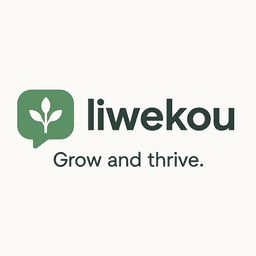Streamline your digital workspace: tools and techniques for lasting organization
Cluttered desktops, scattered files, and fragmented app workflows chip away at time and focus. This article shows practical ways to create a digital workspace that stays organized over weeks and months. You will learn how to evaluate your current setup, apply consistent naming and filing conventions, centralize tools and automate repetitive tasks, and build habits that prevent backslide. Each section builds on the previous one so changes compound rather than conflict. The result is a smoother daily routine, faster file retrieval, fewer distractions, and more reliable team collaboration. Whether you work solo or with colleagues, these methods aim to reduce cognitive load and make organization a sustainable part of your workflow.
Assess and declutter your digital space
Start by measuring the problem. Before adopting new tools, perform a quick audit: how many email folders exist, how many files are on the desktop, which cloud drives are active, and which apps send the most notifications? Use simple metrics like number of files older than six months, unread messages, and duplicate documents.
- Run a 30-minute purge: archive or delete what you no longer need and move active projects to a single staging folder.
- Identify duplicates: use built-in tools or lightweight utilities to find duplicate files and consolidate versions.
- Create a temporary quarantine: for unclear content, move items to a “review” folder and revisit them weekly instead of hoarding indefinitely.
This assessment creates the foundation for structure. Decluttering reduces noise and makes subsequent naming and automation decisions meaningful because you’re working with a smaller, intentional dataset instead of an overwhelming mess.
Establish consistent file and naming systems
A consistent structure shrinks search time and eliminates decision fatigue. Choose a folder hierarchy that mirrors how you think about work: by client, product, quarter, or task. Keep depth shallow – three levels often works best – so you avoid complex navigation.
- Adopt a naming convention: use elements such as date (YYYY-MM-DD), project code, version, and short descriptor. Example: 2025-08-01_projX_meeting-notes_v2.docx.
- Standardize file types and templates: create templates for recurring documents and forms to ensure uniformity and faster creation.
- Tag and metadata: when available, apply tags or custom metadata to allow cross-folder searches without moving files.
Consistency matters more than perfection. Implement the convention, document it in a short guide for yourself or your team, and enforce it via templates and onboarding so the system remains coherent as new files are added.
Centralize tools and automate repetitive workflows
Fragmentation across email, chat, cloud storage, and project tools drains time. Centralize where possible: choose one primary cloud drive, one project management tool, and one communication channel for work topics. Reducing the number of places you need to check cuts context switching.
- Integrate apps: use integrations or automation platforms to move data between apps automatically, like saving email attachments to the correct project folder or creating tasks from starred messages.
- Automate routines: set recurring tasks, calendar batching, and script small actions such as nightly backups or routine file cleanups.
- Limit notification surface: turn off nonessential alerts so only actionable items surface.
Automation reduces the burden of manual upkeep and enforces structure silently. Start with a few high-impact rules and expand once they prove reliable.
| Tool | Primary use | Platform | Typical cost |
|---|---|---|---|
| Google Drive | Cloud storage and collaboration | Web, desktop, mobile | Free tier; paid plans from $1.99/month |
| Notion | Notes, dashboards, lightweight database | Web, desktop, mobile | Free personal; team plans from $8/user/month |
| Zapier | Automation between apps | Web | Free tier; paid plans from $19.99/month |
| Microsoft OneDrive | Cloud storage with Office integration | Web, desktop, mobile | Included with Microsoft 365 from $6.99/month |
| Todoist | Task management and recurring tasks | Web, desktop, mobile | Free; premium $3/month |
Maintain habits and schedule regular reviews
Tools only work if people use them consistently. Build lightweight routines that make organization a habit instead of a project. Small, regular actions prevent the need for future large purges.
- Daily 10-minute tidy: clear inboxes, process new files into the right folders, and update task statuses.
- Weekly review: archive completed work, reconcile calendar commitments, and tune automation rules that generated errors.
- Quarterly audit: evaluate folder structures, permissions, and subscriptions. Remove unused apps and adjust naming rules as projects evolve.
- Document changes: keep a short change log for any alteration to naming conventions or folder layouts so team members can adapt quickly.
These habits keep your digital environment lean. The daily and weekly cycles create feedback loops that catch drift early, while quarterly audits allow for strategic cleanup and future-proofing.
Conclusion
A streamlined digital workspace starts with a clear assessment and a focused declutter. From there, consistent naming and shallow folder hierarchies make retrieval fast and intuitive. Centralizing core apps and automating repetitive tasks reduces manual effort and enforces organization without constant oversight. Finally, lightweight daily and weekly habits plus quarterly audits lock in gains and prevent drift. Apply these steps in sequence: audit and declutter, standardize naming, centralize and automate, then institutionalize routines. The payoff is measurable: faster decision-making, fewer lost files, and lower cognitive load. Invest a few hours to set the system up, then protect it with simple habits so organization becomes the default, not a one-time effort.
Image by: Lukas
https://www.pexels.com/@goumbik



